What Are the Most Common Nutritional Deficiencies?
Are you getting all of the nutrients essential for good health?
If you aren’t, you’re not alone. The Standard American Diet makes it very difficult to get, and correctly absorb, all of the essential vitamins and minerals we need for our bodies to run optimally. While taking a multivitamin is a good first step, if you have certain deficiencies you may need additional supplements.

